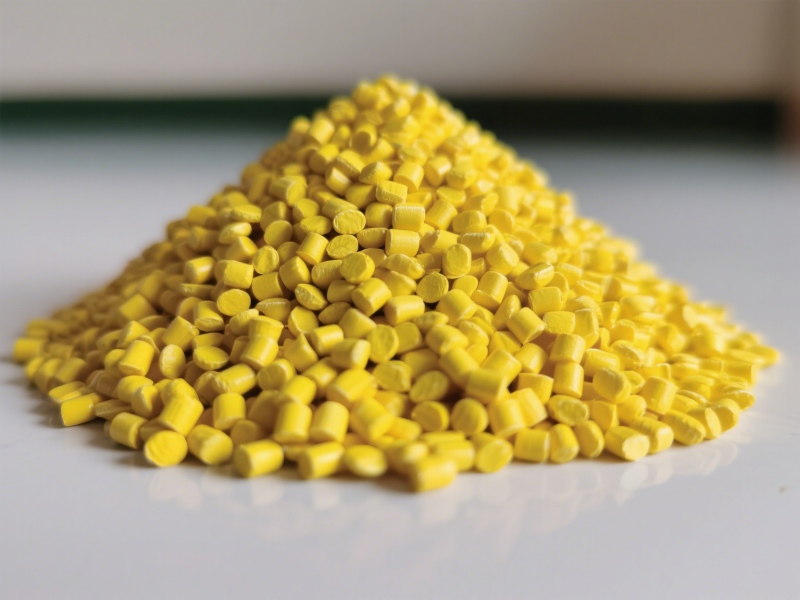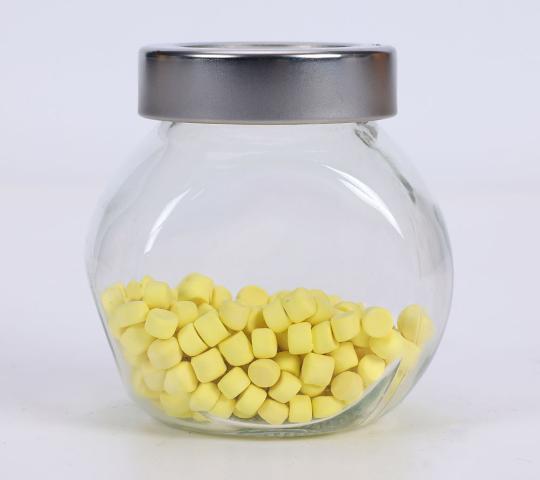Formulators are constantly seeking a better balance between speed and safety, as well as between cure efficiency and environmental compliance. Among the many tools at their disposal, TMTM(TS)-80, a pre-dispersed form of tetramethylthiuram monosulfide, is quietly becoming a go-to accelerator across NR, SBR, and NBR systems. Not only does it provide consistent performance, but it also helps compounders meet stricter handling and regulatory demands without sacrificing cure dynamics.
Why TMTM(TS)-80 Becomes More Popular in Rubber Compounding
TMTM(TS)-80 has earned increasing attention from rubber technologists for three main reasons: safe processing, predictable performance, and formulation flexibility. With growing industry restrictions on nitrosamine-generating accelerators like TMTD, and a stronger push for dust-free, worker-friendly production environments, pre-dispersed accelerator masterbatches like TMTM-80 are gaining traction.
Its compatibility with a wide range of base polymers and accelerator systems means that it fits easily into both existing and new formulations. For compounders focused on mid-speed vulcanization, high scorch resistance, and a clean curing process, TMTM(TS)-80 is not just an alternative—it's often an upgrade.
What is TMTM(TS)-80?

TMTM(TS)-80 is a pre-dispersed rubber chemical masterbatch containing 80% tetramethylthiuram monosulfide (TMTM) and 20% polymer binder and dispersing agents. It is offered in pellet or granule form, often based on EVA or EPDM carriers for better compatibility and mixing behavior.
Chemically, TMTM belongs to the thiuram monosulfide class of accelerators. It is a non-nitrosamine generating compound and does not function as a sulfur donor, which makes it particularly well-suited for sulfur-based vulcanization systems where clean, non-blooming, and non-discoloring properties are important.
One critical feature is its high scorch resistance, making it ideal for thick-section articles and complex molded parts where premature vulcanization must be avoided.
Advantages of Using TMTM-80 in Different Rubber Systems
High Scorch Safety
TMTM-80 exhibits an extended scorch time, allowing safer processing windows, especially in injection or transfer molding.
Clean Vulcanization
The compound does not cause blooming, staining, or discoloration, making it suitable for light-colored or technical rubber products.
Enhanced Compatibility
Works well in conjunction with thiazoles (e.g., MBT, MBTS), guanidines (e.g., DPG), and aldehyde-amines, offering flexible formulation pathways.
Eco-Friendly Alternative
Compared to traditional thiuram disulfides like TMTD, TMTM is less hazardous and avoids the formation of carcinogenic nitrosamines.
Pre-dispersed Form Advantage
The pellet form of TMTM-80 ensures uniform distribution in the rubber matrix, reducing handling hazards, dust exposure, and mixing time.
Application in Natural Rubber (NR)
In NR systems, TMTM(TS)-80 is typically used as a secondary accelerator to boost the performance of thiazole accelerators. It offers an excellent combination of scorch resistance and fast cure rate, especially when working with MBTS or CBS.
Recommended Dosage in NR
▪ TMTM-80: 0.15–0.30 phr
▪ Sulfur: 2.0–3.0 phr
Formulators often appreciate how TMTM improves the flow properties of NR compounds, particularly in thick-walled or complex geometries where curing uniformity is critical. Additionally, its non-staining nature makes it favorable for use in non-black NR goods such as pedals, shock absorbers, and rubber seals.
Performance in Styrene-Butadiene Rubber (SBR)
SBR compounds benefit from TMTM-80's ability to promote fast, yet controllable vulcanization. SBR is inherently less reactive than NR, so accelerators like TMTM help achieve efficient crosslinking while maintaining heat aging resistance and dynamic properties.
Recommended Dosage in SBR
▪ TMTM-80: 0.25–1.50 phr
▪ Sulfur: 2.0–3.5 phr
In tread compounds, cables, or molded technical parts, TMTM is usually used alongside MBTS or TBBS to ensure proper cure delay and progression. Its delayed-action mechanism also prevents mold fouling and gives better dimensional stability in post-curing.
Formulating in Nitrile Rubber (NBR)
NBR presents a unique challenge due to its oil resistance and slower cure kinetics. TMTM-80 is particularly well-suited here because of its activator role in thiazole-based systems and its ability to work at moderate cure temperatures.
Recommended Dosage in NBR
▪ TMTM-80: 0.1–3.0 phr
▪ Sulfur: 0.5–2.0 phr
▪ Thiazoles (MBT/MBTS): 1.0–2.0 phr
In fuel hose liners, gaskets, and sealing systems, formulators value TMTM’s ability to reduce cure variability, especially when curing thick or oil-filled compounds. It offers a cure system that balances efficiency with long-term resistance to oil swelling and thermal degradation.
TMTM(TS)-80 isn’t just another accelerator—it’s a precision tool for compounders seeking cleaner, safer, and more controlled vulcanization in a variety of rubber systems. From NR’s elasticity to SBR’s resilience and NBR’s oil resistance, this masterbatch fits in naturally across different demands.
Its rise in popularity isn’t accidental. It’s the result of real, measurable improvements in compound handling, cure consistency, and safety performance. Whether you're reformulating to phase out nitrosamines or simply looking to improve compound reliability, TMTM-80 deserves a place on your lab bench.
 cwc@jxbh-masterbatch.com
cwc@jxbh-masterbatch.com Jiaxing Beihua Polymer Auxiliaries Co, Ltd. / Shanghai Crystal Wells Chemical New Materials Co, Ltd.
Jiaxing Beihua Polymer Auxiliaries Co, Ltd. / Shanghai Crystal Wells Chemical New Materials Co, Ltd.

































